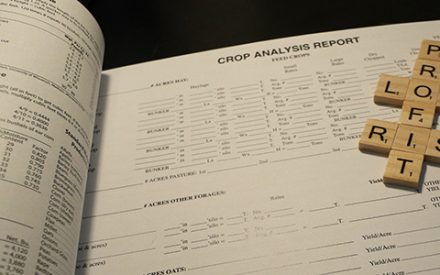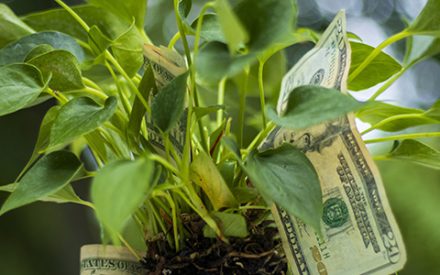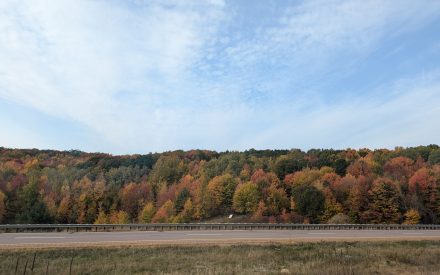Video Summary
In this video, Dr. Emily Bick, assistant professor and extension specialist for field and forage pests in the UW–Madison Department of Entomology, provides an update on forage insect pests, focusing on alfalfa weevils, potato leaf hoppers, and slugs.
Dr. Bick discusses the identification, life cycle, and damage caused by these pests, along with scouting techniques and management strategies. She highlights the importance of timely scouting and using tools like sweep nets to monitor pest populations. She also covers the impact of environmental conditions on pest prevalence and explores integrated pest management practices, including biological control and habitat modification, to reduce pest damage and improve forage quality.
Resources
- First Crop Insect Scouting in Alfalfa
- Insect Pest Text Alerts
- Managing Alfalfa Weevil
- WI Management of Potato Leafhopper
- SlugNet
Transcript
0:05
Excellent.
0:06
Well, thank you so much, Liz, for inviting me out here today.
0:10
I’m talking a little bit about forge pests and some updates.
0:15
When we’re talking alfalfa pests, we’re really talking some old friends here, right?
0:19
So our top insect of interest for that first cutting is the alfalfa Weevil.
0:26
Now I was out scouting yesterday with my sweep net and while, it’s a fairly buggy year so far.
0:31
It’s kind of perfect insect conditions.
0:33
I was not seeing a ton of alfalfa weevils.
0:35
In fact, I caught one adult and no amateurs.
0:39
The way the alfalfa weevils work, ’cause they overwinter as small snout beetles.
0:45
So they kind of look like they have an elephant trunk going on there.
0:48
They’ve got a brown stripe down their back that’s kind of dark brown surrounded by these two lighter brown stripes.
0:56
They generally lay their eggs in late April, early May, and about 13 to 15 days after the larvae emerge.
1:06
Now, these larvae look fairly like caterpillars.
1:09
They look fairly like actually alfalfa butterflies or alfalfa moths that you might see those caterpillars.
1:15
They’ve got this distinctive blackhead and a white stripe down their back, and then you might find the pupal residue down the side down on leaves as well.
1:25
When you’re looking at damage, it would look something like this on the left.
1:30
So about 300 growing degree days in, you want to start scouting with a sweep net.
1:35
I propose using a 15 inch net visually scouting for those skeletonized leaves.
1:41
Or you could actually dislodge some weevils from those stems and the critical piece here is 40% of stems need to be infested and
1:53
You need to be 7 days away from cutting to be able to, to, to take that threshold to spray.
2:00
And if you’re curious about any sort of spray active ingredients or any thresholds or identification, we’d put together this handy dandy guide in large part to the extension colleagues of mine on managing alfalfa Weevil in Wisconsin alfalfa fields.
2:18
We also have one of these up on leaf hoppers as well, but that includes the table straight out of A3646, which allows you to check in and see if you have the right actives under the right trade names.
2:31
Now I’m switching gears a little bit to potato leaf hopper.
2:35
These are more of an issue during those second to third cuttings.
2:39
They’re small, they’re green, they’re wedge shaped, they’re about an eighth of an inch long.
2:43
It look kind of like this if you’re looking under a microscope.
2:46
They’re true bugs, which means they have these piercing sucking mouthparts or little straws that they stick into plants and they do jump when they’re disturbed.
2:55
So if you’re walking through a field and you see a lot of jumping, you have a good chance that you’ll have potato leaf hoppers in your fields.
3:02
One thing to note is with true bugs, unlike flies or beetles or moths, the the immatures really look like miniature versions of the adults.
3:12
So they look slightly more see through versions of those adults.
3:16
And if you’re looking at the life cycle, you can find this handy dandy chart over here, the adults are not overwintering in northern climates, but they do migrate up on southerly winds.
3:35
So that means on storm fronts.
3:38
So what that means we can’t do a great job of predicting when the adults are out in the field.
3:45
Each adult female can put out 200 eggs and they’ll lay their eggs which are kind of small and circular, translucent till then mature into nymphs and then the cycle continues and there will be multiple cycles per year.
4:00
They do result in that substantial yield or damage loss, yield loss, quality loss in the 2nd and and more cuttings.
4:11
When you’re looking out in the field and you see this yellow discoloration chlorosis of the leaflets that might begin at the tip progresses towards the base in a V shape.
4:23
This is called hopper burn or tip burn.
4:25
And then later, if you’re really not managing it and we’re we’re above threshold over here, the you’ll see that the chlorotic areas instead of becoming yellow, will become purplish.
4:36
And then if you let it go far enough, which I hope you don’t, the, the leaflets will turn brown and die.
4:41
And this is super problematic because it stunts and kills the stems or even the entire plant.
4:48
But keep in mind this may look like herbicide burn, right?
4:52
So be sure to make sure that you haven’t sprayed with an herbicide recently.
4:56
Or if you did, if this is much more patchy, it might just be herbicide burn.
5:02
Now, thresholds are based off of sweeping and they differ based off of the size of the plant, right?
5:09
So I would go out and sweep in five different locations. Do 20 sweeps, one with each step.
5:16
Start scouting after that first harvest, that first cutting there when when the plants are small and they’re less than 3 inches, if you get one per 10 sweep, then it’s time to do something.
5:28
If the plants are 6 inches, that’s about 1 every other sweep.
5:34
And then once the plants get larger, you need multiple per sweep to see that that that benefit of that insecticide.
5:42
If you’re curious on how to sweep that, this is the very first video that I did with the University of Wisconsin Madison.
5:48
I forgot my hat that day, so I’m wearing a Cornell hat.
5:51
But basically, if you need a refresh on how to go through and sweep that, I would go to this video on the Crop Protection Network.
5:58
We also have it copied into a number of the of the UW Madison articles.
6:04
However, we went through and did this really cool interseeding alfalfa study where we interseeded alfalfa year one with corn.
6:12
We checked at three different locations.
6:13
This is in the large part due to a collaboration with Mark Renz and his previous post doc Rayhan Shaheb.
6:21
And basically they were trying to tell if there was a a spatial location or where the leaf hoppers would be located in the field.
6:29
So they checked these 70 different grid points at two different critical time points in mid-july and a mid August check.
6:37
And it turns out that like most insects, the leaf hoppers were clustered.
6:41
They were aggregated.
6:43
They’re grouped together.
6:44
The adults tended to move into the field on the edges.
6:47
So as they’re flying up on those on those southernly winds, they end up in the field, but they really end up on the edge of the field.
6:54
And the nymphs were found primarily on those edges, especially late season.
6:59
So what this means is the adults will come into the field, they’ll lay their eggs on the edge, and then they’ll continue moving into the field.
7:06
But it means that if you, let’s say, have a large number of of individuals and you check just the edge of the field, you might overestimate the numbers in your system.
7:17
Or if you’re, if you’re being ambitious, what you could do is just treat the edge of your field if you don’t have too many individuals and you’ll probably be able to suppress the population that way.
7:30
Now, last year we saw a lot of slugs and this year we are also seeing quite a few slugs, both that overwintered and started to hatch out.
7:39
Slugs are mollusks.
7:41
They’re not insects.
7:42
I was a little bit surprised as a trained entomologist that that they were of interest to me.
7:47
We’re mostly seeing these Gray garden slugs and they’re really commonly found in Wisconsin field crops as well as Wisconsin forged crops.
7:56
The life cycles are not synchronized.
7:58
They can overwinter as eggs or overwinter as adults.
8:02
The the adult females lay up to 500 eggs in a lifetime and the adults can live more than one year.
8:10
However, they’re most active right now and most damaging in April to June as well as at that end of the season from September to October.
8:19
And that’s because they really like these cool moist temperatures.
8:21
So we heard from from our first speaker over here that it’s going to be a hot year.
8:25
It’s also going to be, it’s going to be a wet year.
8:29
So it’s going to be a, a bit of a, a toss a coin in the air to tell if, if slugs will be more prevalent or less prevalent.
8:37
They tend to really like no till habitats.
8:40
They like them because it’s, it’s moist, they’re protected, it’s undisturbed, it moderates the temperature.
8:46
So alfalfa and some other forage crops are some great habitat for slugs, which is not so great for farmers.
8:54
They’re also increasingly challenging in Wisconsin because as we adopt more no till practices, which are great for the soils, the slugs are able to overwinter, especially in the warmer winters and the wetter springs more like we saw last year.
9:10
And this has not been a historical problem.
9:13
In fact, there hasn’t really been any research in the state of Wisconsin on this topic.
9:18
So what we’re doing this year, aside from trying to get better photographs of these, which shows some of the window painting effects, the ragged leaves that kind of foliar feeding over here, which is really, really characteristic of slugs.
9:33
We’re aside from going out and doing some more extension on this and trying to talk to folks about slugs a little bit more, we are also doing some research, right?
9:43
So we’re actually looking into some scouting practices.
9:46
We’re looking into tillage and the planting strategies.
9:49
We’re not quite looking into Mollusk baits ’cause they seem to be, they tend to be fairly expensive, but we are looking at biocontrol.
9:58
So when it comes to scouting, I did a video on this last year.
10:04
Basically you take a shingle, you put it in the ground, you can either stake it up and then once a week you can flip that shingle over and count the number of slugs that are on your shingle.
10:14
What this does is even though there isn’t an economic threshold for slugs, it does allow you to identify fields that are at risk and kind of find those problem areas within a field, which can help you to to say if your practices are working or kind of enable you to employ those rescue treatments.
10:35
And well, tillage kind of goes against these no till and soil health philosophies.
10:41
Tilling seems to be a fairly effective way to reduce that slug habitat.
10:48
Additionally, planting early seems to allow us to get around slugs or planting later when the when the plant can kind of outgrow the the mollusk as well as having a more diverse rotation there.
11:02
And while baits do exist, there’s a really limited chemical arsenal.
11:07
Insecticides do not work on slugs.
11:09
The baits are difficult to apply, difficult to dispense evenly and seem to be inconsistent, I should say, in somewhat rainy, cool conditions, which happens to be exactly where slugs like to hang out.
11:26
Though there are some really good biological control options for slugs, right?
11:31
So if we help support our, our biocontrol, our, our good bugs like round beetles, like we see on the top left over there, all of a sudden we can use the, the insects in the field as a way to suppress those, those slugs.
11:47
One of the pieces that we’re looking at is how neonic seed treatments actually impact slugs.
11:52
So I keep alluding to this, but this year alongside the NRCS demo farm network, we’re doing this on farm research trial looking at strip till, looking at aggressive row cleaners, looking at cover crops, looking at seed treatments and natural enemies.
12:11
We’re also we updated a slug information, a risk tree.
12:15
So if you’re interested in making some decisions about slugs, this has less to do with forages and more replant decisions, Take a look at that new resource we put out.
12:24
And then finally, if you’re interested in joining our slug network to monitor slugs, you can go to slug-net.com and start helping us figure out what the problem is in the state of Wisconsin.
12:36
This year.
12:38
We’re also continuing on with our insect past text alert system.
12:42
It looks like we have about 305 people signed up to receive pest text alerts where we work with DATCP and UW Madison extension to give you a hey, heads up text alert, which we’re then tying in really closely to some expanded resources.
13:01
Thank you.
13:02
If you want to get in contact with me, thank you for your for your attention.
13:06
And if you want to get in contact, here is my information.
13:10
Thank you.
Badger Crop Connect
Timely Crop Updates for Wisconsin
Second and fourth Thursdays 12:30 – 1:30 p.m.
Live via Zoom

 ▶ Fall 2025 Financial Assistance for Producers
▶ Fall 2025 Financial Assistance for Producers ▶ Fall 2025 Ag Policy Update
▶ Fall 2025 Ag Policy Update ▶ Fall 2025 Corn and Soybean Market Outlook
▶ Fall 2025 Corn and Soybean Market Outlook ▶ November 6 Ag Weather Outlook for Wisconsin
▶ November 6 Ag Weather Outlook for Wisconsin


